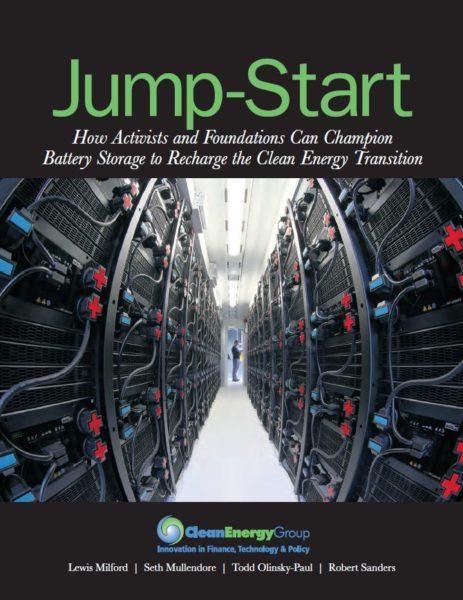Jump-Start: How Activists and Foundations Can Champion Battery Storage to Recharge the Clean Energy Transition
April 16, 2018
Lew Milford, Robert Sanders, Todd Olinsky-Paul, Seth Mullendore | Clean Energy Group
This report was prepared for activists and foundations who want to understand how battery storage can become an essential new part of their clean energy and climate advocacy. It tries to answer two basic questions: (1) What do we need to know to understand these opportunities? and (2) What actions should we support to realize them?
This report explores the top 10 emerging trends for battery storage across all elements of the energy system, and it recommends over 50 actions that should be taken to accelerate battery storage in these topic areas.





